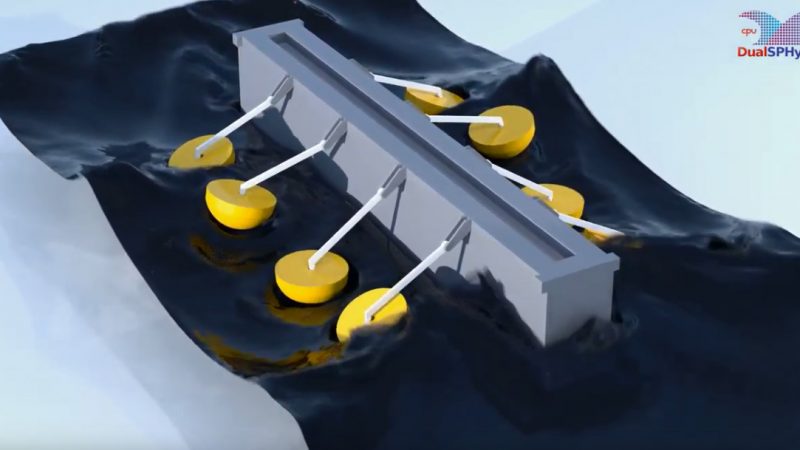Around 40 people from 15 European countries will participate on 22 and 23 January in a training school that will aim to delve into the use of SPH models, specifically the DualSPHysics software, for the design of energy collectors for sea waves. The activity is organized by Ephyslab, the Environmental Physics Laboratory Group (CIM-UVigo), creator of this benchmark software in computational fluid simulation.
The training is entitled Numerical modeling of wave energy converters using SPH models and will take place in the Campus da Auga building on the Campus of Ourense. “This activity is a training school for researchers from all over Europe in the field of marine energy, specifically, to learn how to use our DualSPHysics tool as software for the design of wave energy collectors”, Alejandro Jacobo Cabrera explains, professor at the University of Vigo and member of Ephyslab in charge of organizing this activity, which has the collaboration of the Campus da Auga and the School of Aeronautical and Space Engineering.
Knowing DualSPHysics
The activity, the person in charge indicates, is financed by the COST (European Cooperation in Science and Technology) Action called WECANet, which is in turn financed by the European Commission. “WECANet provides a networking platform that also creates the ideal space for dialogue between all those interested in wave energy. Currently, 31 associated countries actively participate in this network, with the Ephyslab group, specifically professors Moncho Gómez Gesteira and I, representing the University of Vigo, ” Cabrera Crespo remark.
During the training activity to be held in Ourense, attendees will delve into the non-mesh particle models based on the SPH (Smooth Particle Hydrodynamics) methodology and its benefits and advantages for the simulation of wave energy collectors. Specifically, they will address the features and latest innovations of the DualSPHysics software, a 3D fluid simulation model that uses particles and which is used in simulations in which water impacts in three-dimensional structures, such as coastal structures. Universities such as Manchester, Gent, Parma, Lisbon and the Polytechnic of Catalonia participated in the development of this open tool, launched in 2011 by Ephyslab, since then it has been used by all kinds of public and private entities, from Mercedes to NASA.
According with the explanations of the responsible for training, it will involve around 40 people, “including workers from private companies, doctoral students, researchers and professors from different universities” from 15 European countries, specifically, in addition to Spain, Belgium, Bulgaria, Cyprus, Denmark, Hungary, Ireland, Italy, Poland, Portugal, Slovenia, Sweden, the Netherlands, Turkey and the United Kingdom. The teaching will be given, in addition to Moncho Gómez and Alejandro J. Cabrera and José M. Domínguez, from the University of Vigo, by Aleksander Grm, from the University of Ljubljana (Slovenia), and Corrado Altomare, from the Polytechnic University of Catalonia.

